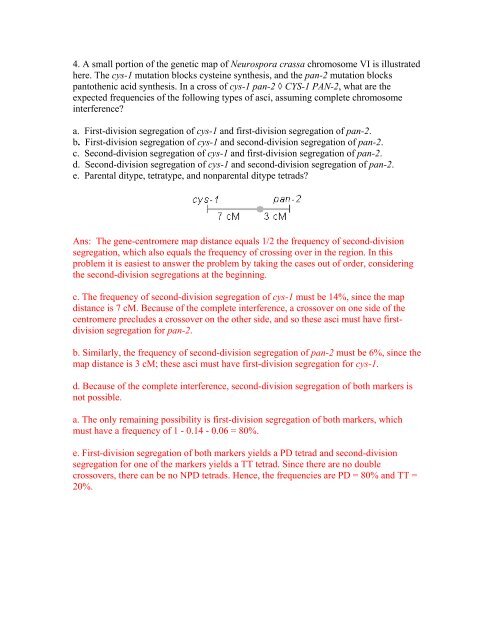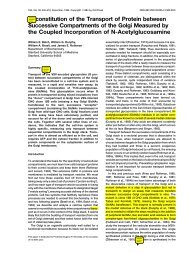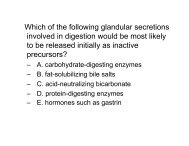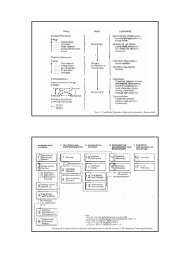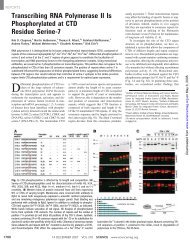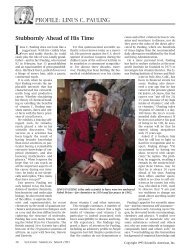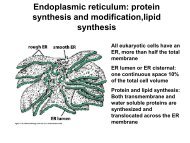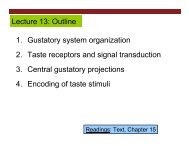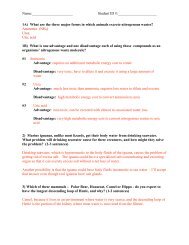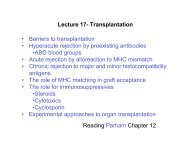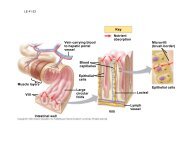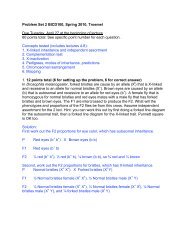Problem Set 5
Problem Set 5
Problem Set 5
Create successful ePaper yourself
Turn your PDF publications into a flip-book with our unique Google optimized e-Paper software.
4. A small portion of the genetic map of Neurospora crassa chromosome VI is illustrated<br />
here. The cys-1 mutation blocks cysteine synthesis, and the pan-2 mutation blocks<br />
pantothenic acid synthesis. In a cross of cys-1 pan-2 ◊ CYS-1 PAN-2, what are the<br />
expected frequencies of the following types of asci, assuming complete chromosome<br />
interference?<br />
a. First-division segregation of cys-1 and first-division segregation of pan-2.<br />
b. First-division segregation of cys-1 and second-division segregation of pan-2.<br />
c. Second-division segregation of cys-1 and first-division segregation of pan-2.<br />
d. Second-division segregation of cys-1 and second-division segregation of pan-2.<br />
e. Parental ditype, tetratype, and nonparental ditype tetrads?<br />
Ans: The gene-centromere map distance equals 1/2 the frequency of second-division<br />
segregation, which also equals the frequency of crossing over in the region. In this<br />
problem it is easiest to answer the problem by taking the cases out of order, considering<br />
the second-division segregations at the beginning.<br />
c. The frequency of second-division segregation of cys-1 must be 14%, since the map<br />
distance is 7 cM. Because of the complete interference, a crossover on one side of the<br />
centromere precludes a crossover on the other side, and so these asci must have firstdivision<br />
segregation for pan-2.<br />
b. Similarly, the frequency of second-division segregation of pan-2 must be 6%, since the<br />
map distance is 3 cM; these asci must have first-division segregation for cys-1.<br />
d. Because of the complete interference, second-division segregation of both markers is<br />
not possible.<br />
a. The only remaining possibility is first-division segregation of both markers, which<br />
must have a frequency of 1 - 0.14 - 0.06 = 80%.<br />
e. First-division segregation of both markers yields a PD tetrad and second-division<br />
segregation for one of the markers yields a TT tetrad. Since there are no double<br />
crossovers, there can be no NPD tetrads. Hence, the frequencies are PD = 80% and TT =<br />
20%.


